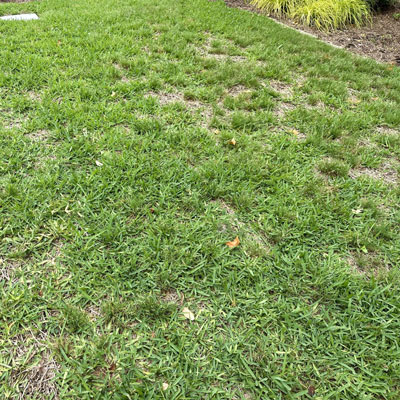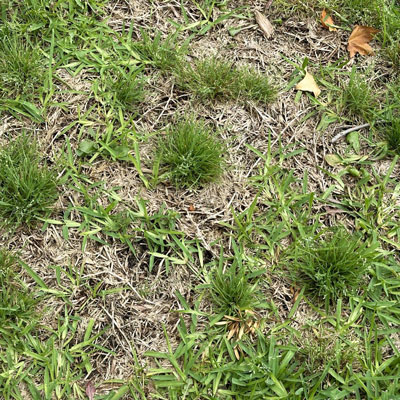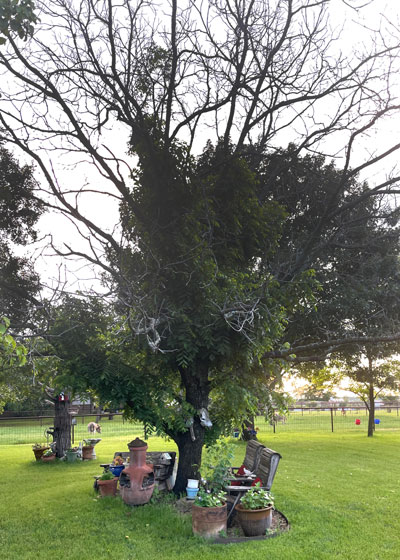Q&A – Ask Neil: May 30, 2024 – Part 1
(Please read these instructions carefully.)
Before you post your question, please look at recent issues to see if someone else has already asked it. You might find your answer there.
How to submit your question…
(Note: You may need to allow a pop-up window to come up in order to get the link for sending your photo(s). If you have already submitted your question and didn’t see the pop-up window, please click here.)
• Click the link provided below to post your question. After you submit your question, a new window will pop up giving you the address to which you can e-mail a SHARP, HIGH-RESOLUTION PHOTO to accompany your question. Please DO NOT SEND THUMBNAIL PHOTOS in case I need to zoom in to see things.
• Click here to post your question.
• Please ONLY POST YOUR QUESTION ONE TIME. We can only accept a set number of questions each week, and when we get duplicates it costs other people their chances.
• One question per reader, please.
• Please use this only for posting questions – not for standard emails.
• Watch for your answer in the following week’s e-gardens.
• I choose those of greatest general interest. For example, plant IDs seldom make the cut.
• I must have your first name or initials.
• I must have your city or county. (Texas is a very large state.)
QUESTION 1
WHAT NIPS YOUNG SEEDLINGS OFF JUST AS THEY GERMINATE?
Question: I’m attempting to start seedlings in my new greenhouse. As soon as the first leaves develop, something nips them off. It happens on flowers and vegetables alike. I have sprayed with Neem oil with no effect. Any thoughts on what it might be? Monica M., Plano.
Answer: I’m trying to “read between your lines.” If the seedlings are being devoured (no remains left behind), that would be the nighttime work of snails, slugs, or pillbugs. Sevin dust or one of the baits for these pests will be your best remedy. If, on the other hand, they are falling over and look as if their stems have been pinched right at ground level with a pair of hot tweezers, that would be a disease known as damping off fungus. It’s quite common with seedlings and can ruin an entire crop within a day or two. It stems from dark conditions, poor air circulation, and contaminated pots, flats or potting soil, especially soil that has been kept overly wet. Sometimes plants that don’t get full sunlight get very lanky and stretch, but I don’t think that would tempt anyone to use a spray such as you did. Unless you have more clues that you didn’t mention, I’m going with my first inclination.
QUESTION 2
HOW WELL DO ROSES DO IN FULL SUN?
Question: I want to plant a few rose bushes in front of my house, but it gets all day sun against a brick and stone wall. All the flowers I planted there last year died by mid-July. Would roses survive? Leslie S., Princeton.
Answer: In the “good old days” (before rose rosette virus), that would have been perfect for roses. Of course, you wouldn’t want to plant them directly against the wall since they’re almost totally bare for 5 months in the winter. But the virus has so wrecked rose plantings that honestly, I can’t recommend planting more than a handful in any one landscape. Even then, a gardener must be prepared to lose them after a couple of years. RRV is carried by a microscopic mite that blows in the wind. We have no prevention or cure, either for the disease or the mite. Once a plant is infected, it must be removed immediately. Please see this information on my website regarding the disease. I live less than 15 miles from you, and I will guarantee you that there are several dozen good summertime color plants that would thrive in full sun in your setting. See my “PLANT” section of Gardening This Weekend in this issue. I list many of them for you.
QUESTION 3
WHY IS MY ST. AUGUSTINE SO THIN? WILL IT GROW BACK?
Question: Why is my St. Augustine so thin compared to other years and compared to other St. Augustine lawns nearby? Will it cover again over the summer? Do I need to resod it? Greg E., Highland Village, Denton County.


Answer: Your St. Augustine is thin, even dead because of things from 2023, not because of anything that has happened to it so far in 2024. Unfortunately, I can’t tell what might have killed it, but chinch bugs were a huge source of trouble last year and the year before that. Take all root rot and gray leaf spot were bad as well. The good news is that it is starting to cover rapidly. The annual bluegrass in your close-up photo will soon be dying out (usually already has), and the St. Augustine will quickly fill in.
Based on what I can see, if you take good care of the St. Augustine and protect it from those issues this summer, it should be fine by the end of the season. I have diagnostic information on all the St. Augustine issues on my website. Be sure, by the way, to apply pre-emergent granules the last week of August through the first week of September to prevent germination of the annual bluegrass next fall, winter, and spring. You have an abundant supply of seeds coming, obviously.
QUESTION 4
WILL NEW PECANS SURVIVE IF BARK HAS BEEN STRIPPED?
Question: I planted several 6-7 ft. pecan trees in late fall. I staked them and all have leafed out. Unfortunately, our cows stripped the bark off the trunks of some of them, some all the way around. I have cages built now, but will they come back? Should I wrap them? Milford W., Buckholts.
Answer: Just inside the bark is a cylinder of tissue called the phloem, and when bark is stripped or cut, the phloem is usually lost at that same time. So is the cambium layer that’s just inside the phloem. The cambium produces new phloem tissue to the outside and new xylem tissue to the inside. Xylem makes up the “wood” of the tree’s trunk. Xylem cells conduct nutrients and water up in the trunks to the leaves, while the phloem carries sugars manufactured in the leaves down to the roots. When the phloem is lost, the roots generally die and the tree dies. It all depends on how much bark is lost and if the phloem and cambium were, indeed, lost. Wrapping would not help. Only time can tell. You might as well leave them and see what turns out. You’ll know by the end of this growing season. At that point, if you have to replant, the proper time will have come back again.
QUESTION 5
WHAT WHITE CRAPE MYRTLE SMELLS LIKE A LILAC?
Question: There is a white crape myrtle at a center near me. It’s about 10 ft. tall, and in the mornings its flowers smell like a northern lilac. Can you identify that particular species for me? Karen C., Hurst.
Answer: I cannot. I work with crape myrtles every day and have for the past 40 years. I also lived in Ohio for seven years and have both of my degrees in horticulture from Ohio State, so I’m familiar with the fragrance of lilacs. I’ve never noticed any variety of crape myrtle with what you have observed. Of the 25-30,000 crape myrtles we’ve planted in medians, parks, and other public areas in McKinney where we have the Crape Myrtle Trails of McKinney, the only white variety I have seen blooming at this point this early this year is Natchez. It grows much taller than 10 ft., but of course, every plant has to start somewhere. Plus, there still are people who insist on the barbaric act of topping crape myrtles each winter.
I’d suggest you get into a local nursery that handles several varieties of white crape myrtles and check out the various types. You might do a better job of answering your own question than I have. In my experience, the best white types for North Texas are Sarah’s Favorite White, Glendora White (difficult to find), Kiowa, and a shorter (to 10-12 ft.), more arching type named Acoma. Natchez is nice, but the others have better flower heads and are more winter hardy in our area.
QUESTION 6
WHAT IS THE PRUNING PROTOCOL FOR HERITAGE RED RASPBERRIES?
Question: I’m familiar with pruning recommendations for my Arapaho blackberries (canes that have borne fruit cut to the ground after harvest). Do I do the same thing with Heritage red raspberries? Holly B., North Fort Worth.
Answer: Raspberries are a lot trickier in Texas than blackberries. The variety Dorman Red is most commonly recommended for our state, although its fruit quality is not what most of us would want. I did some research for you, and the fruit-growing folks at the University of Arkansas say that Heritage is recommended for northern Arkansas. This fact sheet gives very detailed information on how they should be trained and pruned. It’s quite different from your blackberries.
QUESTION 7
WHAT IS HAPPENING TO MY BLACK WALNUT TREE?
Question: I’ve lived in this house for 25 years, and I’ve watched this black walnut grow every summer until this spring. All its leaves are on cluster branches growing off the trunk instead of off limbs. What has happened? Gerald M., Parker, Collin County.

Answer: My wife and I live in an 11-acre pecan forest about 15 miles from you, also in Collin County. When one of my pecans (close relatives of walnuts) looks like this I know that something catastrophic has happened to the trunk. In most cases it has some type of decay in the main part of the trunk and that has caused the death of all branches near that decay and above it. Those branches are going to break sometime in the next few months. I would suggest hiring a certified arborist to remove them before that happens. In the process, they can also examine the branches and the trunk to look for signs of insects or decay. The new growth does look healthy, so it’s possible that you can salvage the tree. A pro will be able to tell you.
Also, I just noticed the tree in the background. It has a trunk as large as your walnut’s, yet there is no top growth extending up from behind the branch of the walnut. Has it lost its top, too? I see foot-long stubs of branches that have been left after pruning on it. Those would be enough to result in decay that could move into the main trunk. Perhaps your walnut had something similar to that type of pruning. That could be the source of your trouble. All cuts should be flush with the trunk’s branch collar, not several inches out from it.
